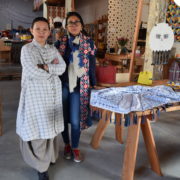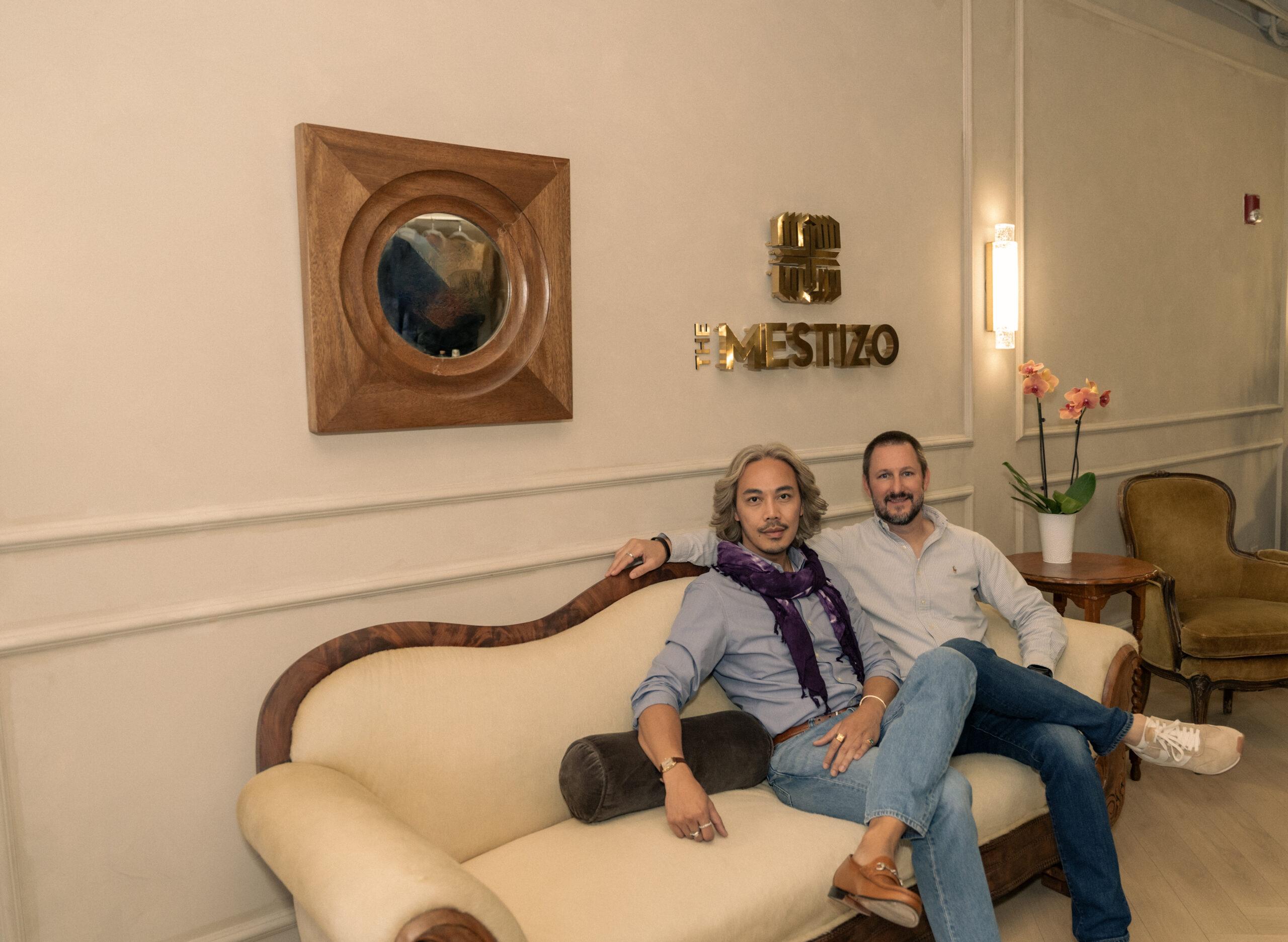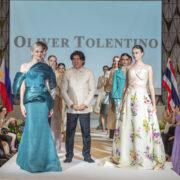FOR many Filipinos globally, one way to proudly show their heritage is by wearing it on their sleeves, literally.
This is the mission of Pinay designers like Lenora “Len” Luisa Cabili, who has been promoting Philippine culture through her international women’s clothing brand Filip+Inna.
She was recently in San Francisco where her line was among two Pinay-owned brands featured at the Workshop Residence, a showroom that features an array of crafts and furniture. She also held a trunk show in Los Angeles last year, which was visited and well-received by Filipino Americans and other design aficionados.
Cabili, who grew up in Iligan City, Mindanao, said Filip+Inna is based on growing up near and learning about the indigenous groups and dancing for the Bayanihan Dance Company.

“Having that background and my love for fashion, I thought of integrating both,” she told the Asian Journal. “Also, I was well aware of the diversity of our culture and so I really wanted to make something different, something that would showcase the artisans around the Philippines.”
She added, “When I was thinking of a brand name, I didn’t want it eponymous and I wanted something that would point back to the Philippines. So I started with the most obvious that I’m Filipina and just played around with the word and there’s a plus sign.”
In 2008, she began working with the T’boli tribe near Lake Sebu in South Cotabato and sourced weaves from the artisans.
Her work with the T’bolis led where she is now, working with 450 artisans from over a dozen tribes across the country, from the Mangyans to the Ifugao. Immersing herself in their traditions and lifestyles are how she’s been able to build relationships with these various tribes.
“We take inspiration from traditional patterns and we create new patterns out of [them]. But we limit ourselves to something that is familiar to each group. We really want people to have a sense of the craftsmanship that is around the Philippines because the diversity of our culture is just really filled with sophisticated embroidery and patterns and even the colors,” Cabili explained.
One of the important considerations is seeing how they live, how much work it takes to deliver products, and what kinds of resources they have access to. For example, for the Tagakaolo tribe, she has worked with requires a six-hour hike and then two-hour drive down to the nearest center in order to send out or pick up a package.
“We make sure we remain true to the purpose: that it’s all about the artisans in the Philippines and giving them an opportunity,” she said.
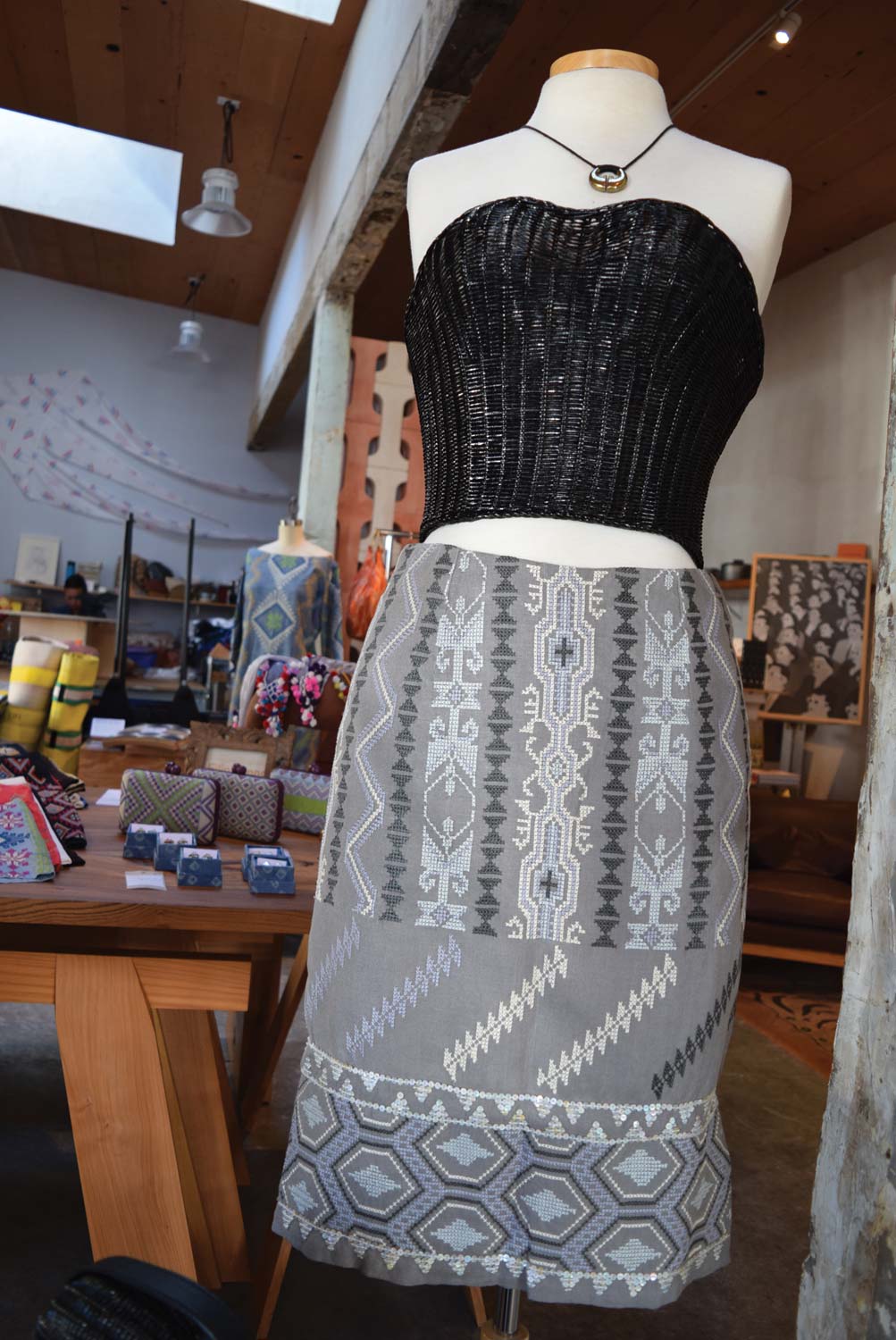
Filip+Inna’s latest spring/summer collection features patterned pieces using predominantly indigo, orange, and crimson hues. The individual pieces, which are made by the various tribes, can be paired together, such as the T’boli Bomber Jacket & Mangyan Cigarette Pants.
“Although the colors I use are contemporary, when you look at the traditional garments, it’s just really amazing how the handiwork has a soul to it because they have spent time working on it. When we work with artisans, we give them free rein on when to finish it,” she said, adding that the female artisans work at home and are able to take care of their family while doing so.
Though the artisans have more flexibility to fulfill orders, Filip+Inna has a system where some are given priority, especially when it’s an international order or if there is a trunk show coming up, Cabili said.
This also makes for more conscious products that are not swiftly made.
“We’re really doing things differently because I think in the fashion industry now it’s all about like fast fashion. Within a day, you can make something and sell it. But for us our investment is actually with the artisans for a long period of time,” she said, saying that the time also allows for a story to be told behind the brand and its pieces.
Ironically for Filip+Inna, spreading awareness of Philippine culture and handiwork started with promoting the brand abroad because Cabili said the local market was “not ready for it” because buying high-end Filipino designs was not as popular.
In 2009, she reached out to Indagare, a membership-based luxury travel company that reviewed her pieces and invited her to a trunk show in Southampton, New York.

“I started doing trunk shows with them and I thought it was really a great way to test the market and it was [because] they’re very discerning here [in the U.S.] So it really forced us to create good quality products,” she said, adding “I like the whole idea of being able to talk about the brand, meet the people who come to the trunk show, and talk about Philippine culture. It’s just a great way to sell the brand.”
Nearly 10 years later, Cabili said the tides have turned in terms of Filipinos at home and abroad supporting the line.
“Things have changed and people love supporting local artisans and people like working with artisans. I think it’s an inflection point for the Philippines because we’re just coming into something in terms of whether it’s culture or fashion or music or food. I think people are paying more attention to us. It’s an interesting time for Filipinos,” she said.
Dresses can range from $600 to $900, while coats are around $700 to $950 depending on the design and embroidery.
“The only way for people to put proper value into something like that is to really consider the handiwork,” Cabili said. “I mean, it can’t be fast fashion. The fact that it takes weeks or sometimes months, that means that it’s something really special.”
The steeper price tags also factor in that the artisans are compensated fairly for their efforts in making the pieces, Cabili explained. The quality also shows that the individual pieces are meant to be investments and not discarded after one season.
“I think sometimes people forget that when they look at it and then they say, ‘Oh, it’s expensive.’ But they need to look at it in the proper perspective – that it’s something that is made by hand…Almost all our pieces are one-of-a-kind because even if it’s the same pattern, you will see that their take on the design is different for each,” she said.
As for Filip+Inna’s growth, Cabili is eyeing introducing men’s and children’s lines. But don’t expect a brick and mortar store anytime soon.
“I think there’s beauty in being able to have the opportunity to create something with you controlling time rather than the other way around. I always say that we’re the turtles of fashion, we’re very slow,” she said. “But you know, people wait [and] they’re getting used to it…When they finally get it, they appreciate it. It’s something that they value.”

Zacarias 1925
Also featured at the Workshop Residence was Zacarias 1925, a line of hand-woven bags and home accessories by creative director Rita Nazareno.
The line, named after Nazareno’s grandfather who was an architect, also carries on the legacy of her grandmother who started S.C. Vizcarra in 1925. The pieces are also made at the same workshop. While S.C. Vizcarra’s hand-woven bags are more traditional and linear, Nazareno draws on her global travels and inspiration from art, architecture and cinema.
“Some have called [the line] contemporary, some have called it avant-garde. I think it’s just the proportions that I enjoy and how you can push weaving techniques, shapes and textures,” Nazareno, a former producer and creative services director for local TV stations in LA and Houston, said.
The designer’s call back to the family business has been a way to express her creative chops and give back to the art that gave her opportunities. After receiving a master’s degree in design management and fashion at London College of Fashion, she returned to Manila in 2010 and started her line.
“I surprised myself by saying yes [to come home], because [my mom had] been asking… and I’ve been so happy with my career,” she said. “But then sometimes, you know, there’s a pull that you need to and it’s more than just an obligation.”
One of Zacarias 1925’s iconic bags is modeled after the Frank Gehry-designed Guggenheim Museum in Bilbao, Spain. Another special collection called Zacarapata — made in collaboration with street artist Garapata — is a commentary of the global infestation of commercialization.
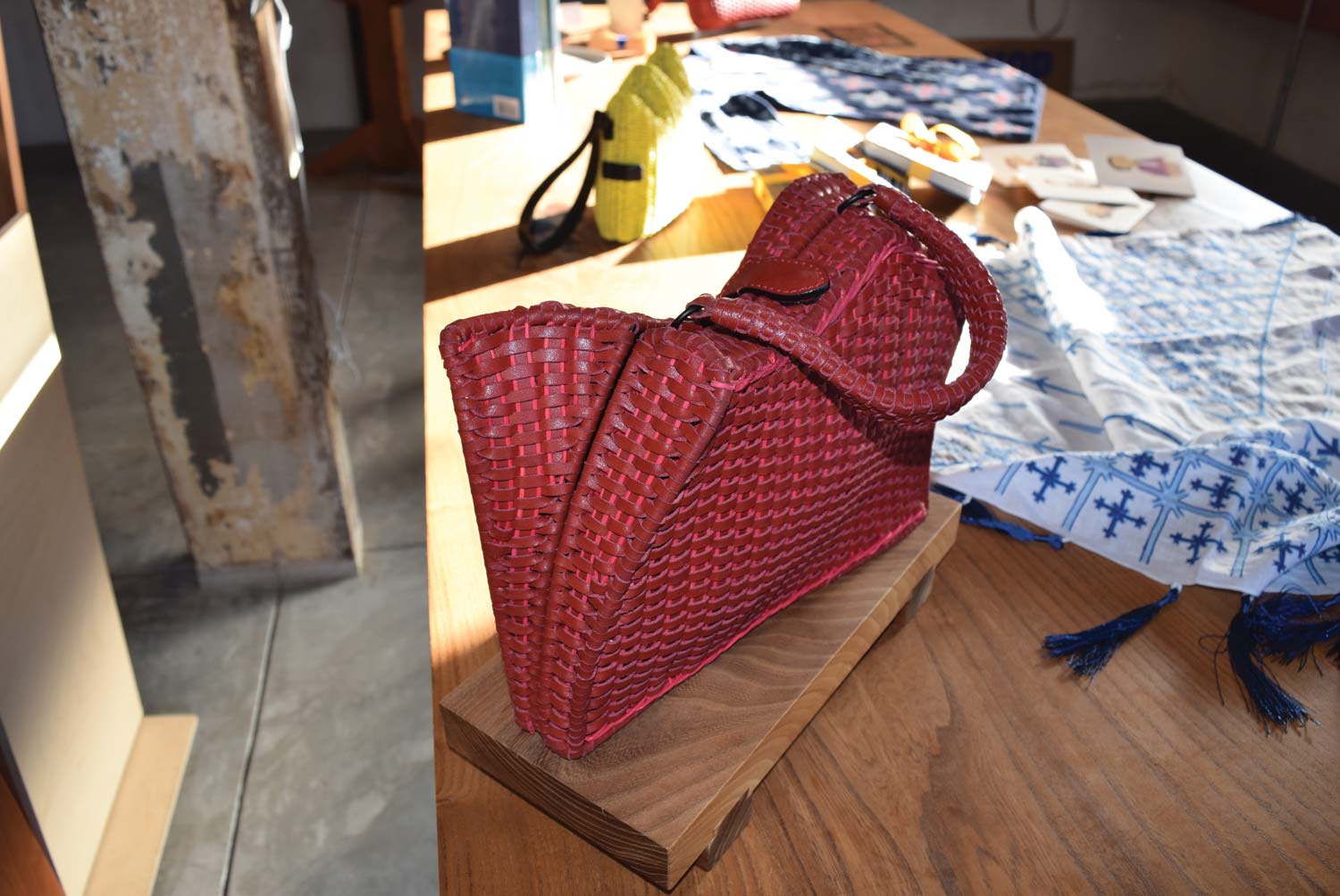
Bags, some of which take up to 15 days to create, run from $250 to $700 depending on the intricacy of the weaves and materials used, such as wicker and leather, which gives a more contemporary aesthetic. Zacarias 1925’s workshop also has room for bespoke and commissioned orders.
“It’s a more contemporary thrust on the very traditional craft of hand-weaving. I use a variety of materials and a combination of materials from wicker, leather, microfiber, canvas, and even nylon ropes we’ve done. I look at things that interest me,” Nazareno said. “It’s fantastic for men and women, and somewhere in between…I do enjoy androgyny.”
The pieces themselves take on unconventional, obtrusive shapes or do not look practical upon first glance, yet they are meant to be functional (like how the wicker backpack can fit a MacBook laptop).
“It’s fun stuff. I like giggling, I like wit. Let’s hope that people see a little bit of it there,” she said.
Every September, Nazareno releases a spring-summer collection, which is shown at Premiere Classe, a leading accessories and fashion trade show during Paris Fashion Week. The line attracts buyers from Europe, Asia and the United States during this show.
Last year, Zacarias 1925 was part of luxury store Please Do Not Enter’s Pulo Project in Los Angeles, which highlighted various Filipino and Filipino American designers and artists throughout the summer. The store continues to have some pieces from Zacarias 1925, and it can also found at retailers in Santa Barbara, California, various cities in Italy (from Torino to Milan), and Montpellier and Paris in France.
Nazareno explains that trunk shows overseas like in San Francisco and Los Angeles have been a way to push the brand’s story, be directly in front of the consumer and introduce them to high-quality Philippine handicrafts. She is slated to do more trunk shows alongside other Filipina-owned brands in major U.S. cities later this year.

“I think people are going back to the general store, mom-and-pop, local community kind of path,” she said, emphasizing the importance of finding stores abroad that can champion the brand like Workshop Residence in San Francisco. “It’s always nice to have that exchange — it’s an energy and cultural exchange and you grow from that.”
With more brands emerging and embracing the “made in the Philippines” seal, Nazareno said she welcomes the selection of designers and companies that also do hand-woven bags and accessories.
“Certainly the design is very different. I think our jumping off points are also already different. I mean, we do have the same material and I love the fact that there’s room out there for everyone,” she said. “I enjoy the fact that there are a lot of designers, especially from the Philippines, who use the same material but have their own voice.”
In turn, she hopes this will get more consumers to invest and buy from their fellow Filipinos, whether in the Philippines or abroad.
“People are harking back to local, to communities, and to hand-made things. They see the importance, the character and the beauty of it…There’s soul to this. You can’t get this from a plastic bag made in China, right?” she said. “Somehow there’s an indescribable factor that there’s a character and a soul to an object and you can feel that because it is made by hands that have been doing it for years and years and that have been passed on.”


